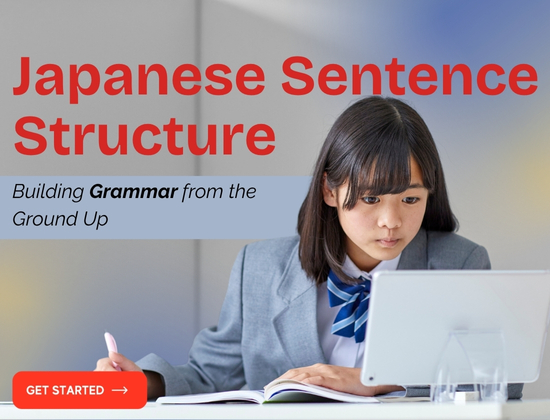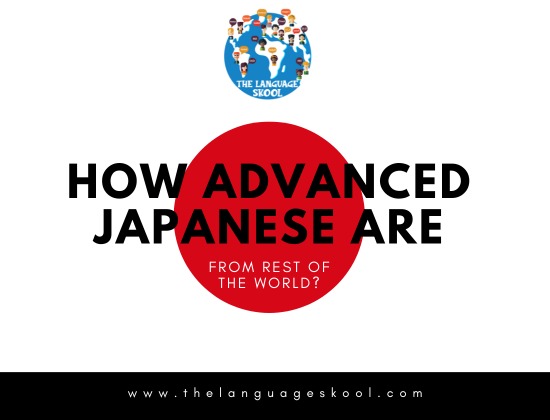
Japanese Sentence Structure: Building Grammar from the Ground Up
.
When you first start learning Japanese, it can feel like trying to read upside-down in the dark with chopsticks! But fear not: mastering Japanese sentence structure is totally doable (and even fun) once you understand the logic behind it.
So, let’s toss the confusion aside and rebuild your understanding of Japanese grammar from the ground up with a pinch of creativity and a lot of real-world usage.
The Backbone of Japanese Sentences: Subject-Object-Verb
The most mind-bending part for English speakers? Japanese follows a Subject-Object-Verb (SOV) structure. That means the verb always comes at the end.
English: I eat sushi.
Japanese: わたしはすしをたべます。
(Watashi wa sushi o tabemasu. → I sushi eat.)
At first, it feels like Yoda is your grammar teacher. But once you get the hang of it, this sentence structure feels surprisingly natural and even poetic!
The Magical Role of Particles
If Japanese grammar had MVPs, particles would win every year.
Particles are tiny words that act like glue, showing the role each word plays in the sentence. Some essential ones include:
-
は (wa): topic marker
わたしは先生です。(Watashi wa sensei desu.) – I am a teacher. -
を (o): direct object marker
パンを食べます。(Pan o tabemasu.) – I eat bread. -
に (ni): direction/time/place
学校に行きます。(Gakkou ni ikimasu.) – I go to school. -
で (de): location of action
カフェで勉強します。(Kafe de benkyou shimasu.) – I study at a café.
Learning to pair the right particles with the right words is key to unlocking fluent Japanese.
The Politeness Puzzle: Formal vs. Casual Speech
Another layer of fun? Japanese changes depending on formality levels.
When speaking to a boss or stranger, you’d say:
-
たべます (tabemasu) – eat (polite)
With a close friend, it becomes:
-
たべる (taberu) – eat (casual)
This polite/casual balance makes the language incredibly nuanced—and super interesting to learn!
Building Sentences Step by Step
Let’s construct a simple sentence together:
-
Start with the subject (optional):
わたしは (watashi wa) – I -
Add the object:
すしを (sushi o) – sushi -
End with the verb:
たべます (tabemasu) – eat
→ わたしはすしをたべます。
(I eat sushi.)
Feeling bold? Add a location and time:
毎日レストランで すしを たべます。
(Mainichi resutoran de sushi o tabemasu.) – I eat sushi at a restaurant every day.
Why Japanese Grammar Isn’t as Hard as It Seems
Here’s the plot twist: Japanese grammar is incredibly consistent. Once you understand the basic structure, it’s easy to plug in new vocabulary and make endless sentences. There are no gendered nouns, no plural forms, and way fewer verb tenses than English. (Yes, really!)
With practice, building Japanese sentences becomes as satisfying as stacking Lego blocks; everything just clicks.
Quick Tips to Master Japanese Sentence Structure
-
Think backwards: Train your brain to expect the verb at the end.
-
Repeat out loud: Speaking helps reinforce the flow of Japanese.
-
Use grammar apps and flashcards: Tools like Anki and Bunpro can boost retention.
-
Watch anime or J-dramas with subtitles: It’s entertainment and immersion!
Ready to Build Your Own Sentences?
Learning Japanese isn't just about understanding grammar rules, it's about using them confidently in conversation. At The Language SKOOL (TLS), we offer JLPT-focused Japanese courses designed to take you from "confused beginner" to "confident speaker."
Whether you're preparing for JLPT N5 to N2, dreaming of working in Japan, or just want to dive deeper into anime without subtitles, TLS’s Japanese trainers have your back.
Learn Japanese the smart way - structured, immersive, and fun. Join TLS today and build fluency, one sentence at a time.












